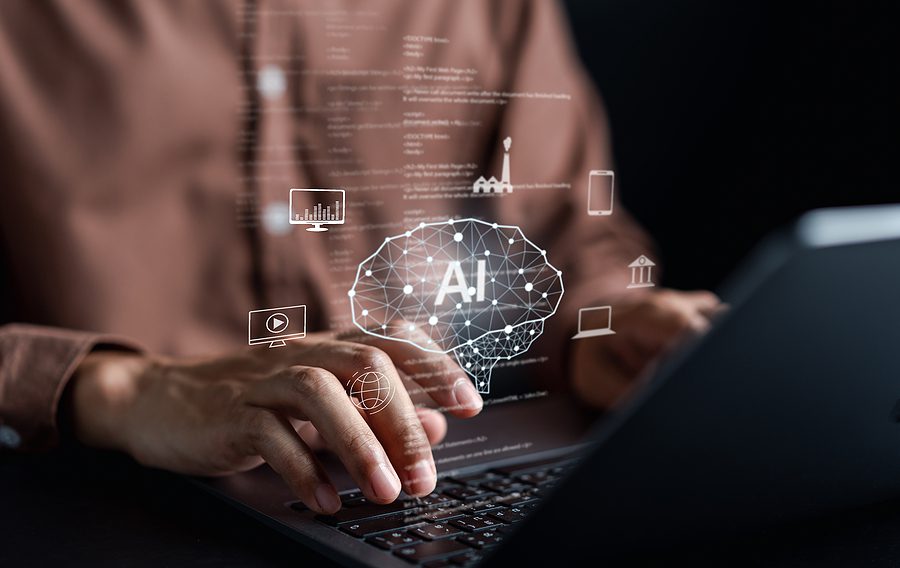The Role of AI and Machine Learning in Data Security
It is inevitable that the further we go with AI (Artificial Intelligence), the greater the impact will be on cybersecurity. While initially it was worrisome that AI would be yet another danger in cybersecurity for companies to prepare for, AI, and its subset, ML (Machine Learning), are in fact, helping to reshape cybersecurity. Machine learning, along with AI, has great power to fortify cybersecurity defenses through vulnerability scanning, malware detection, threat protection, behavior analysis of users, and fraud detection. Rather than an additional threat, AI is actually helping to increase digital security as it continues to evolve.

AI and Machine Learning in Data Security
Cyberattacks are always a risk for businesses, especially as more and more aspects of a business go digital. Not only are the risks more prevalent, but hackers are using more and more complex strategies. It can feel impossible for tech support to keep up with the evolution. Threats are everywhere and ever evolving. To combat the evolution of cyberattacks, we can leverage the benefits of AI.
One of the things AI can do is provide adaptive security measures based on real-time data analysis. AI can quickly analyze millions of events to find many different threats, such as malware, risky behavior that can increase the risk of a phishing scam, or any downloads of malicious code. As AI spends more time in information security, it will become smarter, drawing on what was used in the past to find new lines of attacks and threats. Behavior history can be used to build a picture of the network or user, and AI will then be able to spot differences from the norm. Machine learning is studying online threats in real time, building models of how people act, and using that learning to assess new information that is coming in.
Threat Detection and Prevention
Looking for anomalies in data is one of the primary ways that AI can help with data security. As AI learns about typical behavior, it is able to identify anything out of the ordinary, which can indicate an attack. AI makes it possible to handle large amounts of different types of data that is then analyzed to predict potential cyber threats. Machine learning algorithms can also predict how customers and users might act. If a user’s logins or downloads are happening at odd times or handling a new volume of downloads, the behavior can be flagged. As soon as a cyberthreat is suspected, AI can send alerts as well as act alone by instantly sending in defenses that will thwart an attack. With the help of AI, security flaws can sometimes be addressed before the data breach even happens.
Security Incident Response
Response time after a breach will often dictate how the business is able to recover. In the event of a data breach, a quick response time will help contain the damage, minimize downtime, and allow for quick remediation of the breach. AI can assist in reducing response time by quickly identifying the source of the breach and the overall impact of the breach. As machine learning continues to take place, AI will get even quicker at determining the cause and appropriate response to mitigate impact.
Regulatory Compliance
Regulatory compliance is important for businesses and their data security, both when preventing threats and responding to a data breach. It’s a good idea for all businesses, regardless of size, to have a comprehensive plan for responding to data breaches in a way that is in line with the regulations for consumer privacy. Using AI to help maintain a practical security plan and response plan will demonstrate compliance with regulatory standards, which can help in avoiding any penalties or legal responsibilities.
Future Trends and Innovations
The evolution of AI in cybersecurity continues to progress quickly. In the future, AI tools will work to refine their algorithms to further enhance threat detection and response capabilities. When AI is further integrated into a system, it will become faster and smarter in identifying and responding to threats. Based on patterns that the AI tools will begin to recognize, AI can create adaptive security measures, reducing the instances of false positives and negatives and making the entire tool more accurate and reliable. During this development, creators of AI tools will need to ensure that privacy and ethics are always at the forefront of development. Having user data available to facilitate machine learning is important, but not to the detriment of privacy.
To best use AI and machine learning in your data security plan, you will need skilled cyber analysts who understand how to use the technology. They can assist in building the data sets that are needed to make the best use of AI algorithms and ensure that it will work within your systems. Starting with one or two use cases can help you create a clear process that will help you confirm and examine possible threats, so you can determine if the AI algorithm is working properly for your system.
AI and ML will continue to evolve, and as they do, will revolutionize the digital landscape. During this time of digital transformation, it is essential that companies do what they can to embrace these new technologies and the benefits they can provide to cybersecurity. Businesses of all sizes can make a point to stay current in the capabilities of AI and machine learning, using the threat protections to help keep their data safe. To learn more about how you can protect your business against cyber security threats, contact AccuShred today.








